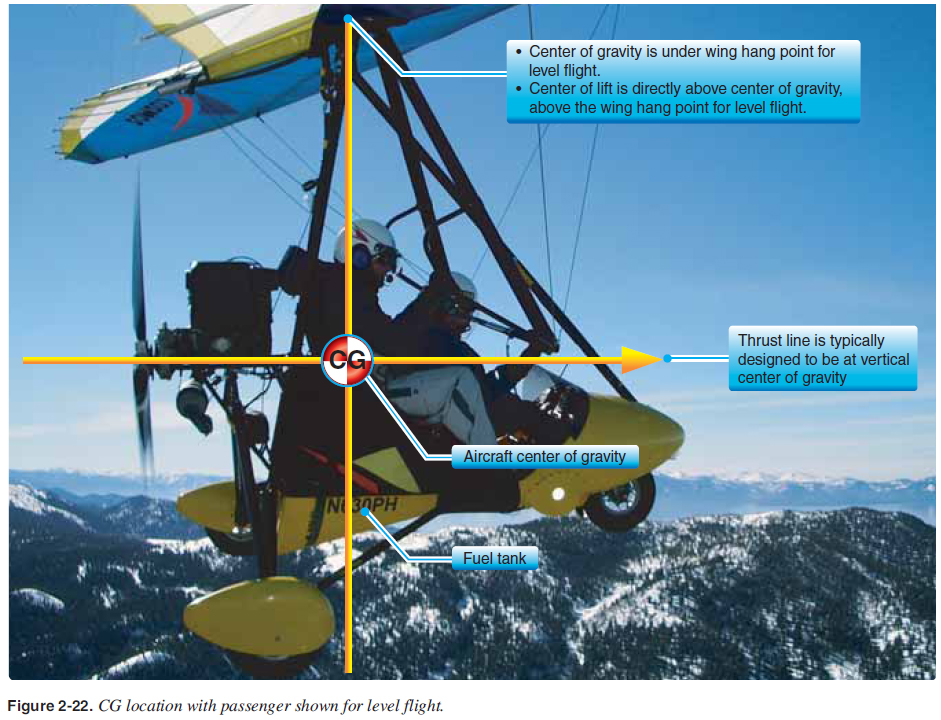
 |
|
||
CHAPTER 2. Aerodynamics Ground Effect Ground effect is when the wing is fl ying close to the ground and there is interference of the ground with the airfl ow patterns created by the wing. At the same angle of attack, lift increases slightly and the drag decreases signifi cantly. The most apparent indication from ground effect is the unexpected lift given to an aircraft as it fl ies close to the groundónormally during takeoffs and landings. More details for ground effect aerodynamics are found in the Pilotís Handbook of Aeronautical Knowledge. Flight characteristics for ground effect are covered in the takeoff and landing chapters. Center of Gravity (CG) The CG is the theoretical point of concentrated weight of the aircraft. It is the point within the WSC aircraft about which all the moments trying to rotate it during fl ight are balanced. The most obvious difference in the CG for a WSC aircraft is the vertical position compared to an airplane, as it is always lower than the wing. The Pilotís Handbook of Aeronautical Knowledge accurately states the CG is generally in the vertical center of the fuselage. The same is true for the WSC aircraft. However, the WSC wing is higher above the fuselage/carriage and, since most of the weight is centered in the carriage, the CG is well below the wing. In a two-seat WSC aircraft, the second seat is typically behind the pilotís seat and the CG is usually located close to the rear passenger seat. Therefore, the CG location does not change signifi cantly with a passenger. Fuel tanks are typically located near the vertical CG so any difference in fuel quantity does not signifi cantly change the CG fore and aft with different fuel quantities. For level fl ight, the CG is directly below the wing/carriage attachment point known as the hang point, and the propeller thrust line is typically designed to be near the vertical position of the CG. [Figure 2-22]  |
| ©AvStop Online Magazine Contact Us Return To Books |